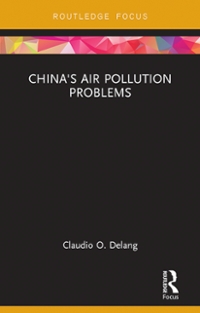Question
1. Consider an open economy that is on a flexible exchange rate system, where C = C(YD), r=I(Y,i),= G, NX = NX(1 ,Y* ,.E), and
1. Consider an open economy that is on a flexible exchange rate system, where C = C(YD), r=I(Y,i),= G, NX = NX(1 ,Y* ,.E), and Md =YL(i)
a. Show the short run effects of a decrease in the demand for goods and services caused by the pandemic using the Five-Figures Diagram we drew in class: goods market, money market, the IS-LM curves, the interest parity condition curve, and the AS-AD curves. Explain your answer. [10 marks]
b. How about the effects in the medium run? Assume that before the pandemic. output was at its natural level. To answer this question, draw the Two-Figures Diagram: the IS-LM curves and the AS-AD curves. Explain your answer. [4 marks]
c. While demand for oil is still lower than normal, the price of oil has recovered to its pre-pandemic levels having hit an all-time low last year. Suppose the price of oil will keep rising. Use the AS-AD curves to show what will happen in the economy. starting with the new medium run equilibrium you found in part b. Explain your answer. [5 marks]
d. What policy action will reduce the effects of the increase in the price of oil? If any? [2 marks)
2. Consider an open economy that is on a flexible exchange rate system, where investment is not responsive to the interest rate. C = C(YD), / = 1(Y), G= G, NX = NX(Y,Y* , E), and Md =YL (i) a. Derive the IS and AD curves for this economy? [8 marks]
b. In response to the COVID-19 crisis. suppose that the government of this economy increases transfer payments to help people struggling during the pandemic. Show the short run effects of this policy using the Five-Figures Diagram: goods market, money market. the IS-LM curves, the interest parity condition curve, and the AS-AD curves. Explain your answer. [8 marks]
c. How about the effects of this policy in the medium run? Assume that before and after the changes, the economy is still in a recession (i.e. its output is below its natural level). To answer this question, draw the Two-Figures Diagram; the IS-LM curves and the AS-AD curves. Explain your answer. [4 marks]
d. Do you think this policy is sufficient to compensate for damage done to the economy's production and consumption of goods and services during the pandemic? Explain your answer. [2 marks]
3. Consider an open economy that is on a flexible exchange rate system, where money demand does not depend on income and is only a function of interest rate. C = C(YD), / ./(Y, G= G, NX = NX , and Md = L (i) a. Derive the LM and AD curves for this economy? [8 marks]
b. In response to the COVID-19 crisis, suppose that the central bank of this economy buys government bonds to provide support to the economy during the pandemic. Show the short run effects of this policy using the Five-Figures Diagram: goods market, money market, the 1S-LM curves. the interest parity condition curve, and the AS-AD curves. Explain your answer. [8 marks]
c. How about the effects of this policy in the medium run? Assume that before the changes. the economy was at the natural level of output. To answer this question, draw the Two-Figures Diagram: the 1S-LM curves and the AS-AD curves. Explain your answer. [4 marks]
d. The more the central bank buys. the lower the interest rates that the government has to pay on new borrowing, and the more the government can borrow. Does this mean the government can spend as much as it wants and protect the economy from damage done by the virus? Explain your answer. [2 marks]



Step by Step Solution
There are 3 Steps involved in it
Step: 1

Get Instant Access to Expert-Tailored Solutions
See step-by-step solutions with expert insights and AI powered tools for academic success
Step: 2

Step: 3

Ace Your Homework with AI
Get the answers you need in no time with our AI-driven, step-by-step assistance
Get Started


